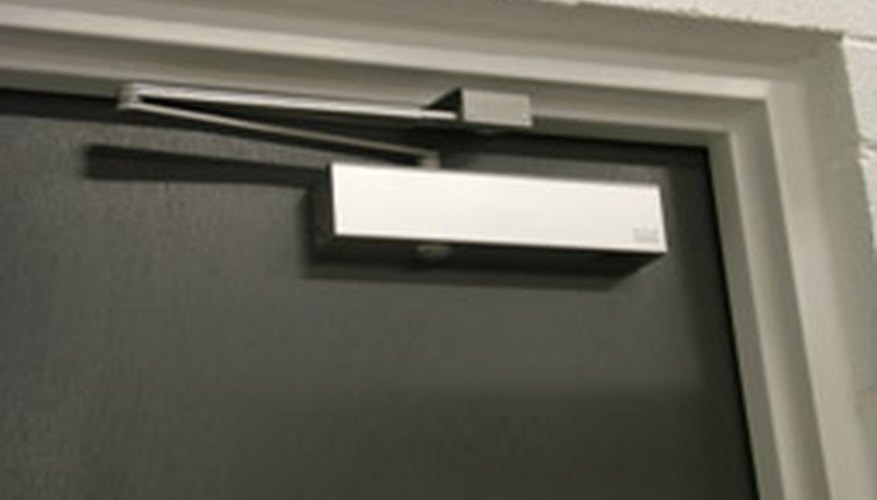A door closer is a hardware device used to control the swing of a door. It uses a simple hydraulic mechanism to automatically close and latch the door after each use. This helps keeps the home secure and reduces the amount of conditioned air that escapes through the door. The Ryobi Doorman closer is a small model designed for residential use. Users may adjust the Doorman closer to control how quickly the door closes and latches.
Understand how a closer works. Ryobi Doorman closers have two speeds that may be adjusted. The closing, or swing speed, controls the door between 90 degrees and 10 degrees. The latch speed regulates the last 10 degrees of closing before the door latches.
- A door closer is a hardware device used to control the swing of a door.
- Ryobi Doorman closers have two speeds that may be adjusted.
Open your door to 90 degrees and release it. Count how long it takes to travel from 90 to 10 degrees, then how long it takes to travel from 10 degrees to latching. The average total closing time from 90 degrees to latching should take between 4 and 6 seconds. This time frame should be evenly split between the closing and latching speeds.
- Open your door to 90 degrees and release it.
- The average total closing time from 90 degrees to latching should take between 4 and 6 seconds.
Adjust closing speed. Examine the side of your closer body. There should be two small screws that are visible on the closer, but do not attach to the door. One is labelled "L" for latch and the other is labelled "S" for swing, or closing speed.
Use a screwdriver to adjust these two screws. Make only minute adjustments, as they tend to have a big impact. To make the door close faster, turn the screws clockwise. To slow the door down, turn the screws counterclockwise. You can adjust one or both speeds as necessary until they are at the recommended level of 4 to 6 seconds combined.
- Use a screwdriver to adjust these two screws.
- To make the door close faster, turn the screws clockwise.
Slow the door down for young or elderly residents. Some users may need to slow the swing speed of the door to create more time for slower residents to enter and exit. Turn the swing adjustment screw counterclockwise in small increments until it is at the desired speed. It is not necessary to adjust the latch speed to match during this scenario.
Help a heavy door latch. Some larger doors may not latch correctly if the closer is left at its recommended settings. If your door is not closing all the way or is not latching, turn the latch speed adjustment clockwise in small increments until the door latches properly. It is not necessary to adjust the swing speed to match the latch speed in this type of scenario.
TIP
If you adjust your closer and it's still not giving you the results you need, you may need a more powerful model. Ryobi Doorman closers are only rated for doors up to 64.9 Kilogram maximum. If you have a very large or heavy door you'll need to purchase a closer designed to handle the extra weight.
WARNING
Don't force the adjustment screws too hard. You could break one and ruin the closer's internal mechanisms. Instead make small adjustments and stop when you meet resistance.
